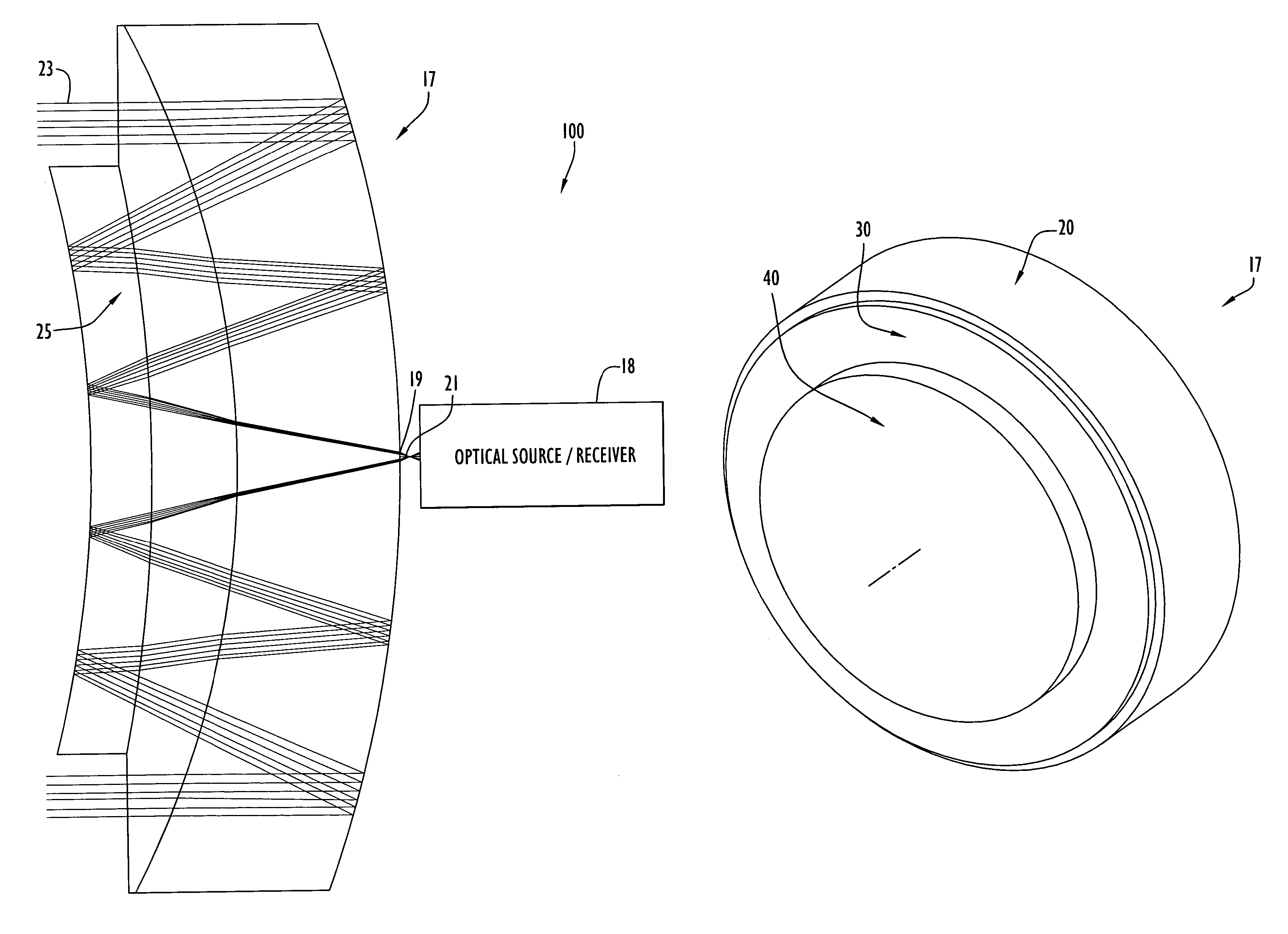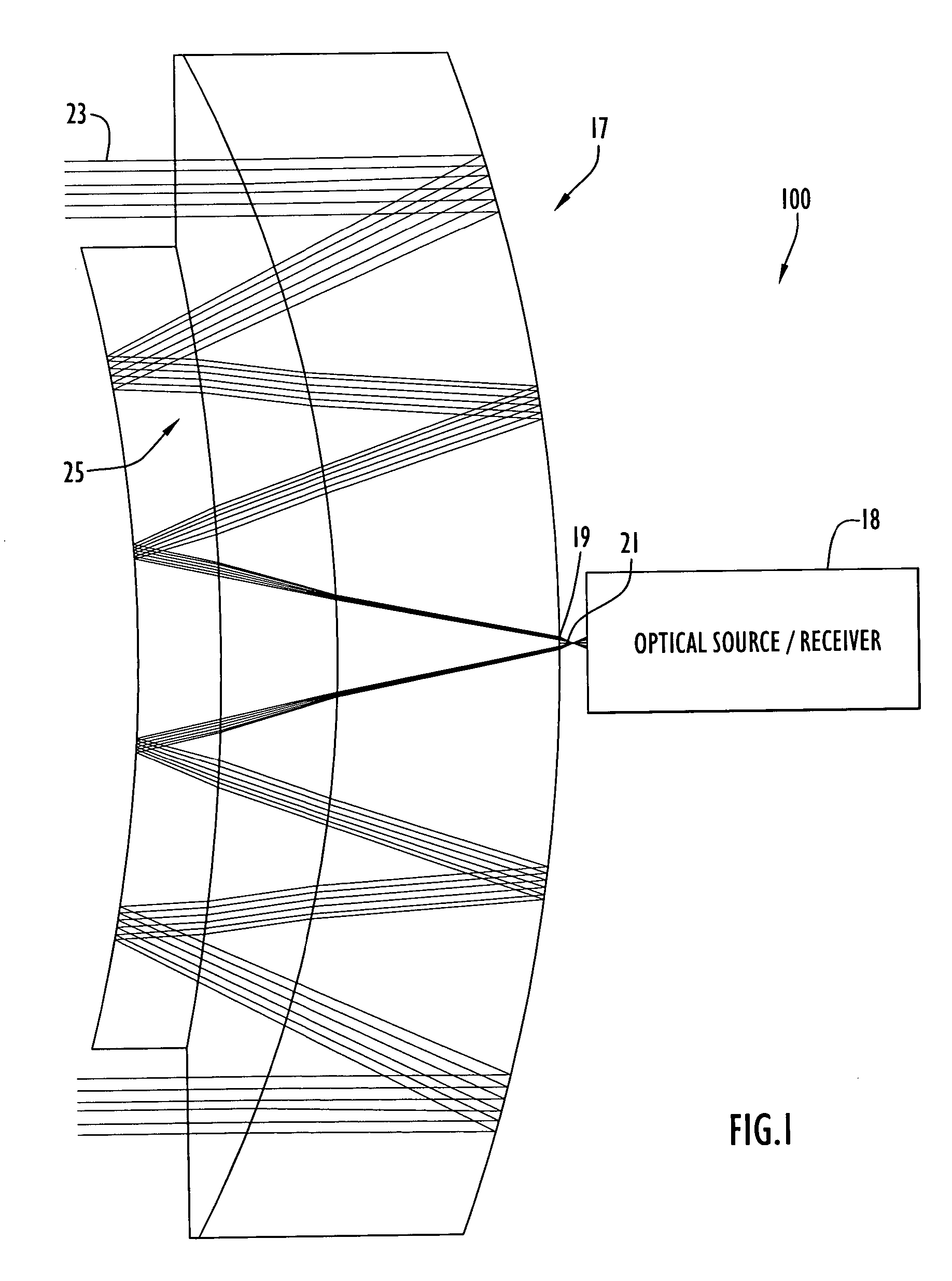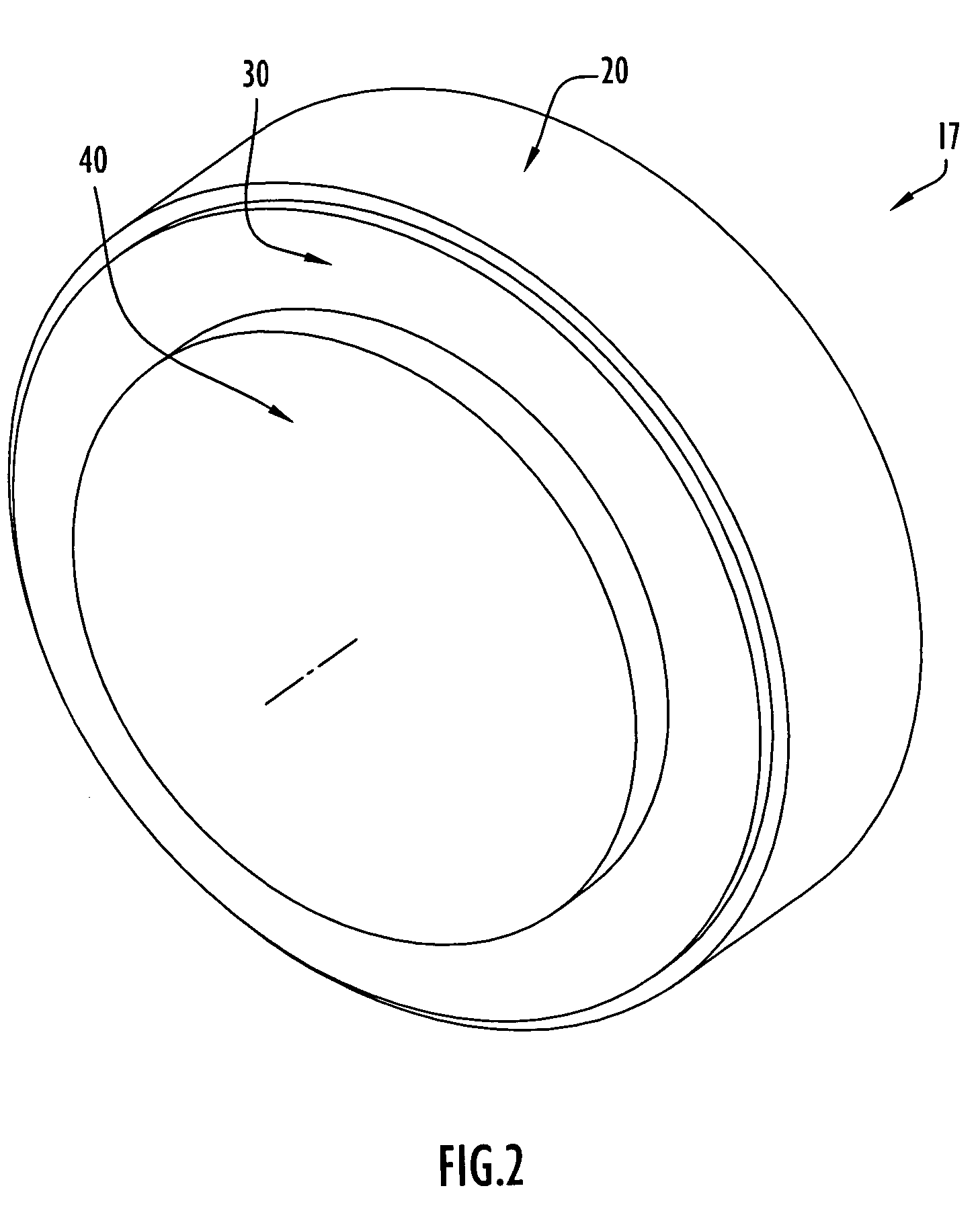Lens collimator and method of producing optical signals with reduced aberrations
a collimator and lens technology, applied in the field of lenses, can solve the problems of degrading the produced optical signal, affecting the quality of optical signals, and affecting the quality of optical signals, and achieve the effect of light weigh
- Summary
- Abstract
- Description
- Claims
- Application Information
AI Technical Summary
Benefits of technology
Problems solved by technology
Method used
Image
Examples
Embodiment Construction
[0028]An exemplary optical communications unit employing a lens collimator of the present invention is illustrated in FIG. 1. Initially, optical communications unit 100 may be utilized in an optical communications system to optically transfer (e.g., transmit and / or receive) information between communication system sites. Specifically, unit 100 includes a lens collimator 17, an optical signal device 18 and an optical signal carrier 21. Lens 17 is typically mounted in a holder (not shown), while this type of application may further include additional optics (not shown). Unit 100 may be in the form of an optical transmitting or receiving unit, where device 18 may be a laser transmitter or an optical receiver to process incoming optical signals, respectively. Alternatively, the unit may be in the form of a transceiver, where device 18 transmits and receives optical signals.
[0029]Device 18 is coupled to lens 17 via optical signal carrier 21, preferably in the form of communications grade...
PUM
 Login to View More
Login to View More Abstract
Description
Claims
Application Information
 Login to View More
Login to View More - R&D
- Intellectual Property
- Life Sciences
- Materials
- Tech Scout
- Unparalleled Data Quality
- Higher Quality Content
- 60% Fewer Hallucinations
Browse by: Latest US Patents, China's latest patents, Technical Efficacy Thesaurus, Application Domain, Technology Topic, Popular Technical Reports.
© 2025 PatSnap. All rights reserved.Legal|Privacy policy|Modern Slavery Act Transparency Statement|Sitemap|About US| Contact US: help@patsnap.com



